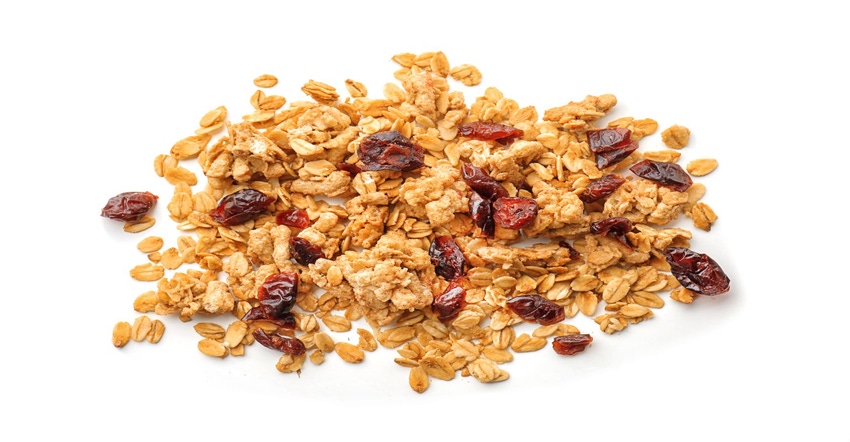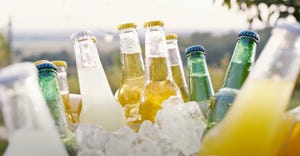The use of artificial colors and flavors in food and beverage is seeing a slow but steady decrease as consumers gravitate toward options they perceive as more natural.

While color and flavor—and the ingredients that help deliver them—are important considerations when developing new products, those colors and flavors also influence and are influenced by key consumer trends.
Two drivers of consumer behavior that specifically link to the use of colors and flavors are health and experimentation. Taking a deeper look at these two trend areas can provide valuable insight to product developers.
Flavors, colors and health
No discussion of trends (or anything in the food and beverage industry, it seems) is complete without considering issues around health and well-being. As evidenced over the last two years, the concept of measuring “health” has evolved into far more than the old tropes of reducing fat, calories and cholesterol. While these are still important, nowadays a greater emphasis is placed on a more holistic approach to health. This means more products are positioned around “wholesomeness” or naturalness, and specific benefits regarding relaxation and emotional well-being.
According to Mintel’s “US Better for You Eating Trends” 2021 report, 52% of consumers feel that products positioned as natural are healthy. That percentage is higher for Baby Boomers than for younger consumers. For all consumers, that positioning of naturalness is the claim most likely to be seen as healthy. For example, 49% of consumers perceive products positioned as low/no sugar as being healthy and 43% said the same of products with no additives or preservatives.
To deliver on that health perception, we have seen a slow but steady decrease in the use of artificial colors and flavors in food and beverage. Looking at data from Mintel’s Global New Products Database, which tracks new product introductions, artificial colors have declined from appearing on 5% of all food and beverage introductions in 2017 to 4.4% of all food and beverage introductions in 2021, a drop of more than 10%. For artificial flavors, the drop is similar, from 5.4% of all introductions in 2017 to 4.7% of all introductions in 2021. In many cases, those products with artificial colors or flavors are everyday products, often those that are private label, imported or ones with a more value positioning. While not the case for every single product, insight can be gleaned into where artificial colors and flavors are more likely to be used.
When it comes to product introductions that focus on health and do not have any artificial colors and flavors, a wide range of CPGs with a variety of health-focused claims fit the bill. A few recent examples:
• Kodiak Cakes now offers a line of Thin and Crispy cookies (Chocolate Chip, Chocolate Chip Walnut, for example) made with “freshly ground grains” and 5 grams of protein, with no additives or preservatives. The company looks not only to the health of the buyer but also the health of the planet, as a portion of the proceeds goes to foundations to support grizzly bears and other wildlife habitats.
• Alter Eco’s additions to its granola line are positioned as “clean, green granola,” promoting not only the lack of artificial colors and flavors, but also no added sugar. As with Kodiak Cakes, the company has strong positioning regarding the environment, using recycled plastic and employing regenerative agriculture practices.
• Welch’s Summer Fruit Snacks sends a very clear message about its natural colors: the front of the pack indicates that the colors of the snacks come from natural sources. The ingredients label includes fruit purees, fruit and vegetable juices, annatto and turmeric.
Regarding mental well-being and relaxation, many teas (ready-to-drink [RTD] or otherwise) are commonly absent of added flavors or colors, but a growing number of other relaxation-positioned products also tout all natural ingredients. For example, an adaptogenic sparkling water called Recess contains no added colors, and the added flavors are natural ones. The beverages are also infused with hemp extract.
This article is continued with a look at color and flavor experimentation in FBI’s “A vibrant alternative: Advances in natural color & flavor” digital magazine. Click the link to access it.
Lynn Dornblaser brings more than 30 years of product trend knowledge to her work at Mintel, which she joined in 1998. She applies her unique perspective on the market and new product development to tailored client research and extensive public speaking. Previously, Dornblaser covered new product trends at several trade magazine publishing companies, as editor and editorial director of publication New Product News. She has been quoted by major U.S. news organizations, including The Wall Street Journal, USA Today, The New York Times and CNN. Dornblaser holds a bachelor's degree in journalism from the University of Illinois and contributed to a textbook on new product development. She can usually be found in the aisles of a supermarket somewhere in the world.
About the Author(s)
You May Also Like






